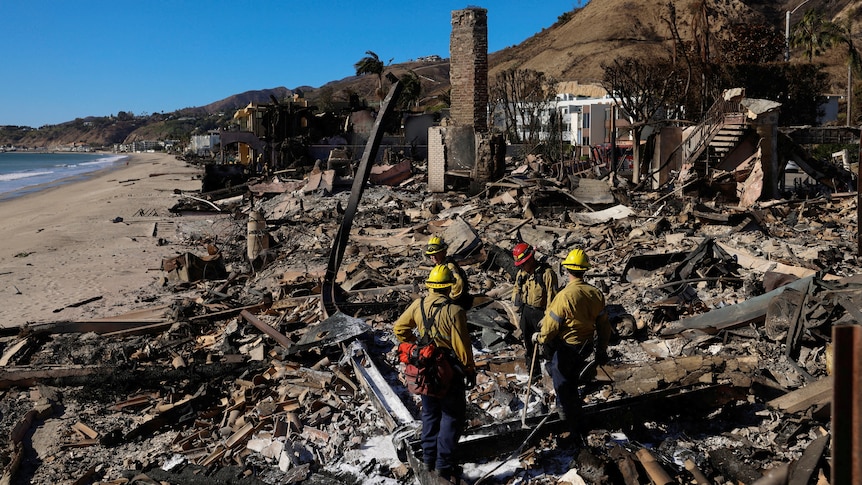Ohio Train Disaster: The Prolonged Impact Of Toxic Chemical Exposure

Table of Contents
Immediate Health Impacts of the Ohio Train Derailment
The immediate aftermath of the Ohio train derailment saw a surge in reported health problems among those in the vicinity. Residents, first responders, and cleanup crews all experienced acute health effects from exposure to the released chemicals. These acute health effects, often stemming from direct inhalation or skin contact, included a range of symptoms.
- Respiratory Problems: Many individuals reported difficulty breathing, coughing, wheezing, and shortness of breath. First responders, who were often on the scene for extended periods, were particularly vulnerable to severe respiratory issues due to high levels of chemical inhalation.
- Eye and Skin Irritation: Burning eyes, watery eyes, and skin rashes were prevalent among residents living near the derailment site. The caustic nature of some of the released chemicals caused significant irritation.
- Gastrointestinal Distress: Reports of severe headaches, nausea, vomiting, and diarrhea were common in the affected communities. These symptoms suggest a possible impact on the digestive system.
- Neurological Symptoms: Some individuals reported dizziness, confusion, and other neurological symptoms, possibly indicative of the neurotoxic effects of certain chemicals.
The immediate health crisis underscored the urgent need for comprehensive medical evaluations and ongoing monitoring of the affected population.
Long-Term Health Concerns Following Toxic Chemical Exposure
The immediate health impacts are only the beginning of the story. Exposure to vinyl chloride, a known carcinogen, and other released chemicals carries significant long-term health risks. The potential long-term consequences are deeply concerning and require extensive monitoring and research.
- Increased Cancer Risk: Vinyl chloride is strongly linked to an increased risk of several types of cancer, including liver cancer, brain cancer, and leukemia. Long-term studies are crucial to assess the cancer incidence rates in the affected population.
- Chronic Respiratory Illnesses: Exposure to the released chemicals could lead to the development of chronic respiratory illnesses like asthma and chronic obstructive pulmonary disease (COPD), particularly in individuals with pre-existing conditions.
- Reproductive and Developmental Effects: Concerns exist regarding the potential impact on reproductive health and developmental effects in children exposed prenatally. Studies on the long-term effects of these chemicals on fetal development are ongoing.
- Neurological Damage: Some of the released chemicals are known neurotoxins, raising concerns about potential long-term neurological damage, including cognitive impairment and other neurological disorders.
Environmental Impact of the Ohio Train Derailment and its Long-Term Consequences
The Ohio train derailment’s environmental impact is profound and far-reaching. The release of toxic chemicals has resulted in widespread contamination of soil, water, and air, with long-term consequences for the ecosystem.
- Soil Contamination: The soil around the derailment site is heavily contaminated with hazardous chemicals, requiring extensive and costly remediation efforts. This contamination poses a significant risk to the surrounding environment and may persist for decades.
- Water Pollution: Local water sources, including drinking water supplies, have been affected by the chemical spill. The long-term effects on aquatic life and the overall health of the water systems are still being assessed.
- Air Quality: The release of toxic fumes significantly impacted air quality in the surrounding area, potentially leading to long-term respiratory problems in residents and wildlife.
- Ecosystem Damage: The contamination of soil and water has devastating consequences for the local ecosystem, affecting plant and animal life. Bioaccumulation of toxins in the food chain is a particular concern.
The long-term ecological consequences of this disaster will require substantial monitoring and remediation efforts.
Government Response and Community Action in the Aftermath of the Ohio Train Disaster
The government’s response to the Ohio train disaster has been met with both praise and criticism. While cleanup efforts were initiated, concerns have been raised about the initial response speed, transparency, and the adequacy of regulatory measures.
- Government Regulation: The incident has intensified calls for stricter regulations regarding the transportation of hazardous materials and improved safety protocols for train operations.
- Environmental Protection Agency (EPA) Involvement: The EPA's role in overseeing the cleanup and assessing the environmental impact has been subject to scrutiny.
- Community Response: Affected communities have shown remarkable resilience and activism. Residents have organized protests, demanded accountability, and formed community groups to advocate for their rights and push for environmental justice.
- Legal Battles: Numerous lawsuits have been filed against the railroad company and other entities involved, seeking compensation for damages and holding them accountable for negligence.
The ongoing community action and legal battles highlight the need for stronger governmental accountability and regulatory oversight.
Conclusion: Understanding the Prolonged Impact of the Ohio Train Disaster
The Ohio train derailment represents a catastrophic event with far-reaching consequences. The immediate health impacts, coupled with the potential for long-term health concerns and significant environmental damage, underscore the gravity of this disaster. Continued monitoring and research are essential to fully understand the long-term effects of this toxic chemical exposure on human health and the environment. The event highlights the urgent need for stricter regulations, improved safety protocols, and proactive measures to prevent future occurrences. We must learn from this tragedy and advocate for stronger safety regulations to prevent future toxic chemical spills from train derailments and similar disasters, ensuring the protection of both human health and the environment. Stay informed about the ongoing situation, support affected communities, and demand accountability for those responsible. The consequences of the Ohio train disaster are a stark reminder of the need for a comprehensive and effective approach to preventing future toxic chemical exposures from train derailments.

Featured Posts
-
 Celtics Playoff Win Payton Pritchards Contribution And Game Changing Plays
May 12, 2025
Celtics Playoff Win Payton Pritchards Contribution And Game Changing Plays
May 12, 2025 -
 Quand C Est L Heure C Est Mueller Analyse Du Quart De Finale Bayern Inter
May 12, 2025
Quand C Est L Heure C Est Mueller Analyse Du Quart De Finale Bayern Inter
May 12, 2025 -
 Keanu Reeves Cant Bring Back John Wick In John Wick 5 A Realistic Look
May 12, 2025
Keanu Reeves Cant Bring Back John Wick In John Wick 5 A Realistic Look
May 12, 2025 -
 Boston Celtics Payton Pritchard A Sixth Man Of The Year Story
May 12, 2025
Boston Celtics Payton Pritchard A Sixth Man Of The Year Story
May 12, 2025 -
 Sylvester Stallones Involvement In Jason Stathams Latest Film Expectations Vs Reality
May 12, 2025
Sylvester Stallones Involvement In Jason Stathams Latest Film Expectations Vs Reality
May 12, 2025
Latest Posts
-
 Health Advisory Department Urges Caution Amidst Soaring Temperatures
May 13, 2025
Health Advisory Department Urges Caution Amidst Soaring Temperatures
May 13, 2025 -
 Natsionalni Savet Roma Analiza Iz Ava Marinike Tepi I Pitanje Govora Mrzhnje
May 13, 2025
Natsionalni Savet Roma Analiza Iz Ava Marinike Tepi I Pitanje Govora Mrzhnje
May 13, 2025 -
 Are Wildfires Pushing Uks Rarest Wildlife To Extinction
May 13, 2025
Are Wildfires Pushing Uks Rarest Wildlife To Extinction
May 13, 2025 -
 Health Department Issues Heat Advisory Rising Temperatures Prompt Urgent Warning
May 13, 2025
Health Department Issues Heat Advisory Rising Temperatures Prompt Urgent Warning
May 13, 2025 -
 Devastating Wildfires The Threat To Uks Rarest Species
May 13, 2025
Devastating Wildfires The Threat To Uks Rarest Species
May 13, 2025
